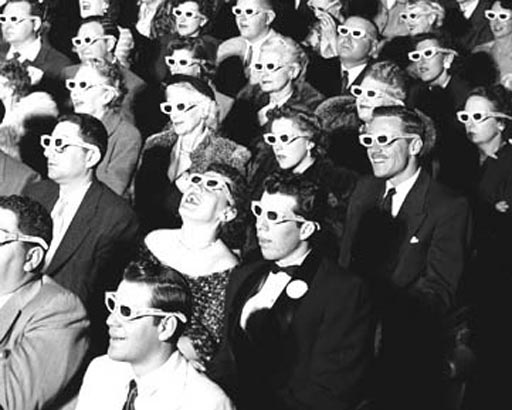I have a love/hate relationship with 3D. It looks cool, makes for a fun theater experience. Seeing kids reach out in front of them to grab whatever is floating in front of their face makes me grin.
However, I get the biggest headache during/after seeing a 3D movie. I call it “3D Headache” and the last one ruined my evening. No, it wasn’t just that I saw My Bloody Valentine 3D.
Anyway, seems there is science to back up this reaction to 3D, and it’s not looking like the 3D Headache won’t be going away any time soon.
Slate’s Daniel Engber [Via an io9 article] says this:
Vision researchers have spent many years studying the discomfort associated with watching stereoscopic movies. Similar problems plague flight simulators, head-mounted virtual-reality displays, and many other applications of 3-D technology . . .
One potential explanation for the discomfort lies with the unnatural eye movements stereoscopy elicits from viewers. Outside of the 3-D movie theater, our eyes move in two distinct ways when we see something move toward us: First, our eyeballs rotate inward towards the nose (the closer the target comes, the more cross-eyed we get); second, we squeeze the lenses in our eyes to change their shape and keep the target in focus (as you would with a camera). Those two eye movements-called “vergence” and “accommodation”-are automatic in everyday life, and they go hand-in-hand.
Something different happens when you’re viewing three-dimensional motion projected onto a flat surface. When a helicopter flies off the screen in Monsters vs. Aliens, our eyeballs rotate inward to follow it, as they would in the real world. Reflexively, our eyes want to make a corresponding change in shape, to shift their plane of focus. If that happened, though, we’d be focusing our eyes somewhere in front of the screen, and the movie itself (which is, after all, projected on the screen) would go a little blurry. So we end up making one eye movement but not the other; the illusion forces our eyes to converge without accommodating.
Read this full article at Slate. Some people have blamed the 2-color 3D for their discomfort, however that’s not the case with me and others I’ve spoken with. I may stay away from 3D movies from now on, because the word DAMAGE is in the full article.










